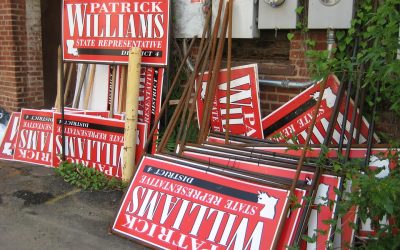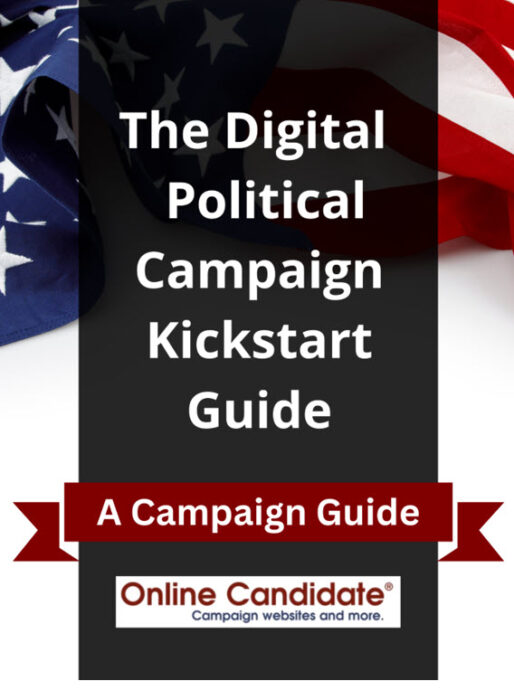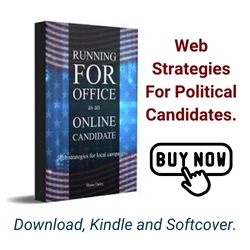How to Run and Win a School Board Election
In many ways, school boards are heart of our communities. They ensure that all children have access to a quality public education. School board members are elected officials who make decisions and set policies for their district.
These policies include managing budgets, upgrading, and building new schools, and deciding the curriculum that is taught. They also serve as liaisons between their community and the school system. The board works closely with teachers, parents, students, and other community members to ensure that the education system is running as efficiently as possible.
Running for school board is a bit of different than running for other local offices. Campaign spending is generally less, and most campaigning is usually performed only a few weeks before election day.
Year after year, education is ranked as a top voter concern, yet voter turnout rates for school board elections remain low. One reason for low voter turnout is that school board elections often occur on dates that differ from general elections. Some advocates have suggested the idea of combining school board and school budget elections with other local and state election dates that have a higher turnout rate.

Who makes a good school board member?
Running for a school board position is a significant responsibility. School board members have a hand in setting the district’s budget, academic goals, and educational policies. You don’t have to be a parent to run for office. In fact, many school boards across the nation are comprised of non-parents who represent those who send their children to independent schools or whose children are already grown.
Because of the unique situation of these elections, the winner is often the person who can get more people to the polls. The best way to win a school board position is to motivate your supporters.
Candidates should be passionate about their community and education. They need to be able to work with others and bridge conflicts. They should seek out the best interests of the students and the community as a whole.
Becoming a school board member can seem difficult at first, but there are several steps necessary to get started.
Learn the basics about your district
Find out when the next school board election will be held. You’ll need to know the filing dates for candidacy and other requirements to get on the ballot.
Get informed. Do some research about your district. Find out how many schools are in the district, the number of total students and employees, as well as the size of the budget and its recent growth. Attend public meetings to see firsthand how the school board conducts itself.
Fact: According to the National Center for Education Statistics, in the fall 2020, about 48.1 million students attended public schools from kindergarten to grade 12.
What topics concern voters? Parents, friends, and relatives can also help you determine the most important issues facing the district. How are those issues being addressed by the current board? What position do you take on those issues? Are they the same or different? What solutions would you propose as part of your campaign strategy?
Do some research on your current school board. Find out how long each member has served, when they are up for reelection, and do some research into their last election. Who supports them? How much money did they raise and spend? What issues did they run on, and what are their current positions on those issues?
Create a clear platform and campaign message
The most important thing is to have a clear platform and message. That way, people will know what you stand for, and they will identify with your campaign. Be sure to keep your messaging consistent throughout the campaign.
What skills do you have that are valuable to the position? Your strengths may include finance management skills, a dedication to public service, or even a history of activism on behalf of children and families.
Research relevant education-related issues. The issues that are faced by your district and the solutions that you propose will form the foundation of your platform. From there, work on refining your messaging and breaking it down further into more specific components – right down to an ‘elevator speech’ you can use when speaking with others.
For example: “I want to be a school board member because I am passionate about education and the future of our children. I believe that there is a huge disconnect between the school and the community, and I would like to work with both groups to bring people together.”
The importance of fundraising
A key component to winning a school board election is fundraising. It is important that you have enough money for sign printing and other campaign materials. For a lot of candidates breaking into politics, fundraising can be an intimidating process. It’s often hard to know how much money they’ll need to raise, or even where they should spend it.
Build a strong base of grassroots donors who will be your most reliable and loyal supporters. These donors include your family and friends, but also colleagues and other community members. These are the people that you can rely on for contributions, right up to election day.
Besides having a campaign website, you’ll want to use social media. Most candidates for school board start with platforms like Facebook, Instagram, and Twitter. Social media lets directly reach people who might not know about your platform and plans for the school district.
Outside groups can also help you raise money, recruit volunteers, and spread your message. The most common types of outside organizations are Political Action Committees (PACs) and SuperPACs (a type of independent political committee). PACs are also referred to as “connected committees.” These organizations can solicit unlimited donations from people who agree with their cause, and they can use the funds to directly support candidates. They cannot give money directly to candidates, but they can help sponsor events or buy ads on behalf of a candidate.
While having a boost from outside organizations can be valuable, that support can cause controversy. Some voters may view PACs as a way for wealthy special interest groups to influence their local politics and school board decisions. Consider your fundraising sources from these organizations carefully.
Finally, many candidates hold fundraising events. These include more traditional activities such as dinners, concerts, auctions, and rallies. Public events let you engage with your community. But some types of events, especially those that involve food and entertainment, can become expensive to put together. Candidates should first consider the costs and benefits before hosting a fundraising event.
Tips and ideas for school board campaigns
- A school board’s primary mission is to establish local policy and to monitor and evaluate progress within the school district. Know the issues of your district. Attend school board meetings and begin participating as a parent or interested taxpayer.
- Put together a plan for your campaign. Determine the number of voters and calculate the percentage of votes you need to win. Study previous campaigns and learn what previous candidates did right (or wrong).
- Choose a good campaign slogan. Here are some examples that focus on education and students.
- Use both offline and online outreach channels. Typical online channels include email and social media platforms like Facebook and Twitter.
- Turn out the vote. If your election date is off-season, getting out the vote (GOTV) is especially important. You need to work hard to get voters to the polls. Speak with as many parents as you can and encourage them to vote. Keep reminding supporters through email, social media, and phone banks up and through election day.
Get your message out with a campaign website
A school board candidate website provides a great way to publicly state your platform, inform your supporters of the issues, and as a tool to help get them to the polls. We’ve helped many school board candidates and school board president candidates win their elections. With a choice of four affordable website options, political campaigns of all sizes can build a great online presence to reach voters and build support.
- Our Monthly Website Option includes school board template options and is designed for political campaigns starting with a tight budget and do not want to go with one of our extended website packages. The Monthly Option features recurring billing that can be cancelled at any time.
Online Candidate provides the hosting, design, and tools necessary to build a winning online presence. Our platform is designed to help your raise money, recruit supporters, and spread the word.
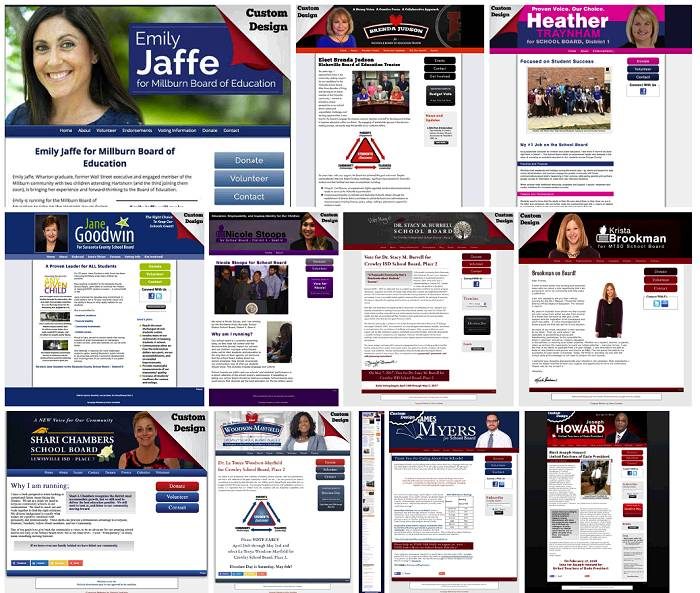
See our school board website design examples.
Need campaign print materials?
Looking for campaign brochure templates for your school board election? Creating a well-designed political brochure can require top publishing and graphic software. Add in the cost of hiring a professional designer, and a school board election campaign can quickly eat up its budget.
For those without access to Quark and InDesign can still design and self-publish attractive campaign materials. Professionally designed Word brochure templates and school board election flyers are a great way to create consistent-looking materials that will distinguish your campaign from the competition.
Related: Political Canva Templates
Conclusion
Anyone with the initiative to run and win their seat can become a board member for a local school district. You don’t need to have special credentials; you just must step up, win your seats and be sworn in as a new board member.

Check out our school board website packages and resources. They provide an affordable way to start your school board campaign.
Related:
Tips For Great Political Campaign Photos
From brochures to websites to press releases, political photography plays an important role for any political candidate. We live in a visual world, so your images need to be compelling and help tell a story to voters.
Besides your campaign logo and colors, photos are crucial in creating a personal brand. Images are used for print, websites, social media, and even television. Having a good stock of visuals on hand will make it easier to design quality promotional material and create your website.
Here are some political photography ideas, tips, and best practices to help you get the most eye-catching visuals.
Your candidate head shot and portrait

Your head shot is one of the most important pictures you will take. It will be used over and over again throughout the campaign. Take several sets with different outfits. If you are wearing a formal outfit, try taking some pictures without a jacket. Solid colors are better than patterns and stripes. Patterns can create blurriness or distortions, especially when the size of the image is reduced. If your headshot is going to be edited for a campaign website, brochures, or direct mail, use a contrasting neutral background.
Here are headshot tips that work well for your website or social media header:
- A head-on or three-quarter view is typical.
- Make sure BOTH shoulders can be seen. Don’t crop them off!
- The best images for site headers are those where the subject is standing against a solid, contrasting background. This allows the background to be more easily cropped out.
- Large, high resolution images are best. Large-sized pictures can be scaled down, but small, low-res graphics cannot be improved much.
- Dress appropriately.
- Don’t forget to smile!
Family photos to show your personal side

This is probably NOT how you want to stage a political family photo. It’s a little TOO cute…
Though they may not be directly involved in your campaign, family photos are an important way to give voters more idea about your life and story. These can be staged in your home or in outdoor settings. You should be the center or main focus. Avoid elaborate vacation settings or any activities that too out of the ordinary – unless you are making a particular point.
Informal candidate photos in natural settings

These can be taken both indoors and outdoors. They can show you in a variety of activities, even in private moments. They don’t all have to be ‘happy’. For example, show yourself work setting, getting the job done. Get some non-staged pictures from special events or just slices of life in daily activity. Some of the best photography looks natural.
Show the candidate with different audiences

Show yourself engaged with others. This can include senior citizens, youth or students, veterans, work organizations, or other groups. Focus on the voter groups or organizations that you are specifically targeting. These types of photographs show that you have a relationship with that segment of the electorate.
As election season continues, be sure to have pictures taken at rallies, fundraisers, debates, and other events.
Engage with your audience, rather than simply posing with them. Check that you are not over- or under-dressed for the occasion.Some of the photos should appear “candid,” looking like they were taken by an audience member or participant at the time.
Photos with notable people and endorsers
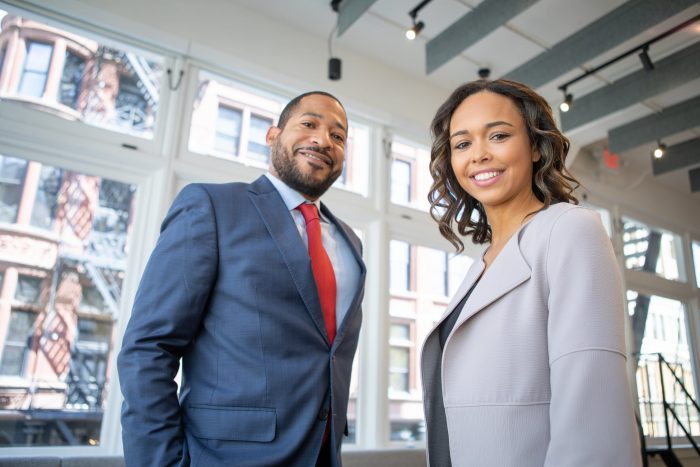
A photo with a prominent endorser can improve your reputation and show that you have a relationship with notable people. Group table or side-by-side event pictures are good, but photos of the subjects interacting or speaking together are particularly powerful.
Other ideas to consider include posing with staff and volunteers while on the trail. These types of pictures show your staff’s appreciation, boost morale, and are great for posting to social media. If someone who is voting for you wants a picture with you, go for it. Make sure you ask for and have permission to use the image in your campaign material.
Pictures with local landmarks and locations

Take pictures of local locations and notable landmarks for reference.
Have yourself photographed in locations that voters can identify. They can include local neighborhoods, schools, parks, waterfront, or major landmarks. Dress appropriately for each location. For example, dress more casually in a park or natural setting. Be sure to get any required permissions for your locations. Take different pictures from different angles, and don’t make the candidate the center of each picture. Leave large areas of space around the subject so that designers can later use that negative space to add text and graphics to the image.
Take some extra photos of the landmarks alone. They can be used for other design purposes, such as watermark backgrounds, as part of a website header, or as reference shots in print material or mailers.
Hiring a professional photographer for your campaign

Professionals have experience capturing important moments. They can guide you in deciding on photo opportunities, and provide quality images.
Photoshop can fix many things, but it can’t fix bad photography.
Consider hiring a professional photographer. Quality photography pays dividends in your campaign’s overall impression and professionalism. A photographer may be one of the earliest items you budget for. Professional photographers who are used in political campaigns are skilled in capturing candid moments, have an eye for composition, know how to balance ambient light with artificial lighting, and are able to work quickly under pressure.
For example, in the 2020 presidential election, both Joe Biden and Donald Trump hired photographers to take photos of themselves at their events. This photography was then used in campaign advertisements.
If you decide to take your own photos, you can still make them great. Most smartphones have fantastic built-in cameras to take photos and record video. Have a volunteer or two help, as you can’t do it all yourself with just selfies!
Schedule a day for a political campaign photoshoot when you can get natural and well-composed shots in a variety of settings, like local parks or public landmarks. Plan out your photo shoot day ahead of time.Outfits, locations, and extras should be ready to go. Have extra pictures taken with different combinations of outfits and positioning. Having a large library of photos will be invaluable as election season rolls along.
Finally, make sure that you get the rights to use all the material for whatever purposes you need.
Release Forms: Anyone who is photographed for a campaign should sign a model release. This includes the parents or guardians of children. If you are taking photos of a group event, make sure that the people are aware. This helps protect the campaign legally and prevents unnecessary surprises. If you hire a professional photographer, make sure you have a contract in place that gives you complete ownership of the images.
Print vs web graphics – there’s a big difference!

A picture’s quality can vary depending on the type of media it is being viewed on.
Most graphics in their regular state (such as digital photographs) are too large to server on web pages. To get around this, a designer must compress the graphics in order to reduce file size but not necessarily dimensions. This requires balancing the quality of a graphic with file-size savings.
Tips for getting images together for your campaign website:
- High-quality JPG or TIF file formats are best for web designers to work with. A designer will be able to resize and cut down the size of the images as needed.
- Prepare several good, high-resolution head shots of the candidate. Those photos should include the shoulders and upper body.
- Prepare images of recognizable landmarks, particularly if your issues touch on those areas.
- Think wide! Consider how a photo might look as an edge-to-edge website banner.
- Try to include descriptive captions for photos of groups or specific locations whenever possible. This information can be used as image alt tags or as captions on a page or post.
- Make sure you have permission from others who are in your photographs.
- Set aside some high-res photos for your online press kit.
Always keep backups of your original, uncompressed graphic files. Once an image is compressed by being saved as a JPEG or GIF file, data is lost, and you cannot recover it from that image file.
A word on safety…
We encourage you and your team to take the necessary precautions when conducting a campaign photoshoot to ensure everyone’s safety.
Great photos help us create better political campaign websites for our clients. With four different packages and upgrades, which option is best for you?
Crowdfunding Your Political Campaign
Is crowdfunding a good option for starting your political campaign? This technique for raising money has been used for years for projects and products. Recently the technique has grown in popularity for political purposes.
Crowdfunding sites set conditions for financial support for candidates exploring a run for office. It can help determine the viability of a candidate while securing a level of backing before they declare their candidacy.
For local campaigns, crowdfunding can provide a jump-start to the initial fundraising process. It can help candidates who cannot afford to self-fund their own election campaign.
[bctt tweet=”Crowdfunding can help candidates who cannot afford to self-fund their own election campaign.” username=”onlinecandidate”]
If you are considering a run for office, you are probably wondering where to start raising money. The good news is that you can find backers, but your job is to get their attention and provide them with a reason to support your cause.
What is crowdfunding?
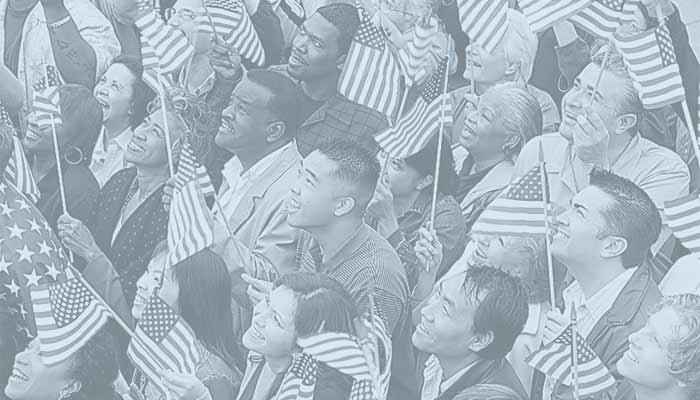
Crowdfunding is a process where individuals pool money and other resources online to fund projects initiated by other people or organizations. This may involve raising funds to support personal or social causes.
Using crowdfunding for state-level and local candidates has several advantages. Crowdfunding is great way to test if you are viable as a candidate in the political arena. It offers a way to test the level of support and secure initial pledges before establishing a formal campaign. It’s like a ‘conditional’ fundraising campaign.
This can be particularly useful for first-time candidates. It can serve as an initial test of how much financial support a candidate can raise. Early success sends a signal to later donors that the campaign is viable.
There are several services that operate as crowdfunding sites, including Crowdpac, Raise the Money and GoFundMe. The services are somewhat different. For example, on Crowdpac, donors aren’t charged unless the candidate actually enters the race. GoFundMe has fewer restrictions on how donations are accessed.
What is required to crowdfund your political campaign
 Before you start any financial actions, you may find that crowdfunding activity falls under local campaign finance rules. Consult with an attorney to make avoid any potential legal issues.
Before you start any financial actions, you may find that crowdfunding activity falls under local campaign finance rules. Consult with an attorney to make avoid any potential legal issues.
When you are ready to start, you will need to sign up with a crowdfunding service and set up your financial goals. You should be realistic with your goal. If you are running for town council, you won’t need to raise 1 million dollars to get your campaign off the ground. Figure out how much do you need to kick off your campaign and later raise your fundraising efforts to the next level.
There are two types of crowdfunding campaigns:
- Conditional campaigns collect pledges before hitting a goal, or before a candidate enters a race. Charges to the donor are made only if the conditions of the campaign are met.
- Direct donation campaigns act more like traditional peer-to-peer fundraising, where you directly receive the donor’s contribution.
Once you have chosen a type of fundraising campaign, you will also need:
- A website – You should have a campaign website in place to send supporters.
- Email marketing tool – Such as MailChimp or Aweber. More extensive options contain a CRM to track donors and supporters.
- Social media accounts – Facebook and Twitter are the two most popular services.
- A Google account – For setting up your campaign Gmail and website analytics.
- An initial press release describing your goal.
- An interesting video describing your campaign, along with a call to action.
The best way to start marketing your crowdfunding initiative is by launching a web page. You don’t need a very large website; a simple web site is enough to take sign-ups. However, you should launch this site before you start your fundraising efforts.
Your political campaign will not be confined to the time of your initial crowdfunding drive. Your financial needs will continue on as you seek office. Eventually the shift of your online efforts will involve your official campaign site and social media accounts.
Once you have your initial elements in place, you can begin putting the pieces together.
Create your campaign crowdfunding page
Build your campaign around a story. For example, in 2008 the Obama campaign put his story around “Hope and Change”. In 2012, the message was “Moving Forward.” In 2016, Bernie Sanders raised 1.3 million small donations for his presidential campaign.
For you own campaign, you will want to tell a story. It should have some sort of hook that compels people to act. It might involve your background or the reasons why you seek elected office.
A good video clip introduction will help explain your campaign. Good video takes time and resources to put together properly. Proper lighting and audio are important. An amateur-looking video is not going to help your cause. Don’t forget to add your call to action at the end of the clip. Upload your video introduction to YouTube and post it to your website and social media pages.
Fill out all the information on your fundraising page. Link your crowdfunding page to your website and social media accounts.

Many crowdfunding campaigns offer prizes to donors, depending their donation levels. Typical political swag includes pins, hats, bumper stickers and even T shirts. However, those items cost money and must be delivered to donors. Because of this, you may want to avoid promising prizes at this stage. You can always send something to your initial donors once your campaign officially launches.
Launching a successful crowdfunding campaign
Preparation is important. You want to lay the foundation for your crowdfunding effort early.
When you are ready, reach out let your family, friends, and likely supporters know that you are running for office and you need their help. Don’t just announce it all at once. Let them know it’s coming.
Your donors should know well in advance of the day of your launch. Use platforms like Hootsuite or Buffer for social media updates a few times every week. Plan to increase your updates to about 10-15 times every day once your campaign goes live. Increase the frequency of your emails as the time nears. Build excitement with a countdown and keep the reminders coming.
- On launch day, make the big announcement. Share your crowdfunding page on social media, and encourage others to do the same. Word-of-mouth promotion is very important.
- Have your press release ready and submit it to local reporters. Try to get the media to cover your launch. Any initial publicity you can get is a good thing.
- Encourage supporters and initial donors to share pictures and updates about your campaign with their own friends.
You want to have a large number of initial donations that first day. That creates initial momentum that will carry you along and attract other donors.
Following up as your campaign continues
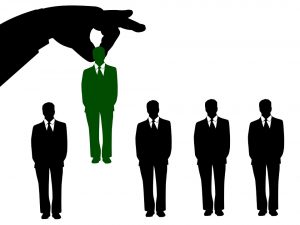 Continue to build interest before you wrap up. The goal is to build as large of a donor base as fast as possible. Those first people who pledge will likely be your biggest supporters once your election campaign officially starts.
Continue to build interest before you wrap up. The goal is to build as large of a donor base as fast as possible. Those first people who pledge will likely be your biggest supporters once your election campaign officially starts.
- Keep supporters updated on your progress. Do this through your website, social media and email list.
- Promote important events such as hitting certain financial goals, the number of donors, and the amount of time left. Build urgency and momentum.
- Keep track of your donor data. Do this for reporting purposes, of course, but also for the purposes of asking them to donate again later.
Financing a campaign with a large number of small donors has many advantages. With crowdfunding, you can raise financial pledges that will give you access to money as soon as you declare your candidacy. This puts you ahead of the game because you will not have to spend precious time trying to raise those initial dollars. You can hit the ground running, having proven your ability to raise funds.
Remember that your supporters are giving you money fully expecting a return on their investment. They want something back. In this case, they want you to start a political campaign and make a run for office.
Whether your effort succeeds or fails, don’t forget to thank your donors and supporters. They deserve it.
Starting a crowdfunding page for your political campaign? Online Candidate provides affordable long and short-term campaign website packages to help your fundraising efforts.
Great Uses For Old Campaign Signs
Once the election is over, the campaign signs remain. Streets and road remained littered with
Here are some ways to get rid of old yard signs without throwing them out.
- Most cardboard signs can be recycled and repurposed. Wire frames can be recycled as well or used for other purposes, such as garden stakes. You can search for local recycling centers at Earth911.com.
 Corrugated plastic yard signs can be covered with a coat of primer paint and reused for other purposes, such as ‘Yard Sale’, ‘Garage Sale’ or regular ‘For Sale’ signs.
Corrugated plastic yard signs can be covered with a coat of primer paint and reused for other purposes, such as ‘Yard Sale’, ‘Garage Sale’ or regular ‘For Sale’ signs.- Plastic film signs can be removed from their stakes and be able to be recycled at a grocery store, along with other plastic bags.
- Sign material can also be used to replace wood in creating bird houses/feeders.
- Donate the signs to other organizations for reuse.
- If your signs are not date-specific, they can always be saved and reused for the next election. This works well if the sign is for a single candidate.
If the sign you want to reuse is for multiple candidates, it can be a tricky. We’ve seen examples where one of the candidate’s names was lopped off the top of the sign and reused. It made the sign dimensions a little off, but it worked.

Recycling is usually the most environmentally-friendly option. Unfortunately, most plastic signs can’t be placed into your regular curbside recycling bin.
Keep your wire frames and stakes. These are expensive. If you ever plan to run for office again, you will want to reuse them. If not, you can always donate them to another political candidate. They will appreciate the contribution.
Remember, most political signage can only be displayed for a limited time after an election. Then they need to come down and be disposed of in some way. Have some volunteers ready to go out and pick them up as soon as possible. Many municipalities have rules as to how long signs may stay up before they need to be collected.
Now when a supporter asks what to do with their old campaign signs, you can give them some recycling options.
Related posts:
Common Campaign Sign Questions
Get your political website started fast for a price that meets any budget.
Common Political Campaign Sign Questions
Yard signs have long been a mainstay for political campaigns. They show support for a candidate or cause. When you see lawn signs blanketing your neighborhood, you know that Election Day is coming soon.
Key Takeaways
- The most common sign dimensions are 18 X 24 inches, 12″ x 18″, 24” x 36”, and 48”H x 96”W.
- A candidate name and office, along with a simple graphic element makes the best design.
- Use one or two fonts and keep the colors to a minimum.
- The best time to order is a few months before you think you’ll need them.
- Place signs in high-traffic and supportive areas, following local regulations for optimal visibility.
- Train and organize volunteers for efficient sign distribution. Provide clear area assignments and regular communication.
What size are political yard signs?
Political election campaign signs come in a variety of sizes and shapes. The most common sign dimensions are typically 18 X 24 inches rectangular. 12″ x 18″, 24” x 36”, and 48”H x 96”W are also common sign sizes. Large campaign signs can have sides as big as 4 feet tall by 8 feet wide. They can be printed on one or two sides with one or more colors. For lawn signs, you’ll want most of them printed on two sides so they can be seen from both directions.
Here’s a breakdown of each sign size and what they are best suitable for:
18″ X 24″
This is the most common and popular size for political usage. They allow the owner to show support for a candidate or cause. They are suitable for both residential lawns and the frontage of small businesses. The 18″x24″ signs are a good size for simply displaying a candidate’s name, position, and a logo or slogan.
12” x 18”
Slightly smaller than the standard size. They tend to be a little less money, too. A smaller size works well for urban areas with small front yards or if you want to cluster them together in an area. These are good for displaying specific campaign messages or to remind viewers of specific voting days.
24” x 36”
Larger signs of this size provide more visibility from a distance. They are best for streets with high traffic, major intersections, or more open areas.
48”H x 96”W (4 feet tall by 8 feet wide)
This is a very large sign, almost the size of a billboard. It’s ideal for high-traffic areas, major intersections, or on sides of large buildings. This size can be used as banners at political rallies and event venues. Because they are so large, they can display larger images of the candidate and additional text or slogans. You may even want to get one for your campaign headquarters.
In all cases, the design should be clear and readable, ensuring that the primary message is effectively communicated even from a distance.
Wire H stakes to hold yard signs are usually available 10 inches wide x 24 inches tall. Some stakes are 30 inches tall. The wires can come in different gauges, depending on their durability. They can support most sizes.
The cost of signage depends on the type of signs you order, the needs of your campaign, and your budget. New technologies allow many printers to manufacture fewer signs per order while still being affordable.
Besides the candidate name and elected position, what other elements should a yard sign include?
Just stick to the candidate’s name and elected position. We see a lot of first-time candidates who want to put a lot of extra stuff on their sign. The fact is, name and office, along with one very simple graphic element makes the best design. It’s the old “KISS” theory: Keep It Short and Simple. There’s no reason to have five or six different things going on. You lose the viewer at that point. Remember, these are signs, not palm cards or brochures. People are driving by the signs rapidly; they just need to see the candidate’s name or campaign logo.

What design tips can make a sign more effective?
First, use common typefaces that are familiar for political signaage. A candidate may think that will make the design boring. But, common typefaces are used often for a reason – they work. Political logos are often designed with a bold, sans-serif font. They stand out and are easy to read.
Next, use just one color, maybe two colors, but only if you have the budget. Large campaigns use one color all the time. If it’s a good design, one color is enough. Using three or more colors is a waste of money and doesn’t actually achieve what politicians think it will achieve. Adding a photo background will make your sign very difficult to read.
The third tip is to use a graphic element. Here’s where it gets tricky. Often times a candidate will put “Vote For” along with a few stars, a couple lines, and then an image or picture. Usually that’s just clutter and only takes away from the main purpose – name recognition. Incorporating one simple but original graphic element isn’t easy, but if it’s done right, your sign will look great – and most importantly, people will remember it.

A candidate logo is often the primary element in the design of a sign.
Reducing visual blindness along the road
After a while, voters driving by the same signs at the same locations tend to not pay attention to the campaign lawn signs. Campaigns can shake things up by exchanging a small sign for a large sign at an existing location.
Another useful strategy is to place some of your bigger election signs next to your competitor’s small signs. It has the psychological effect of making the candidate with the larger sign look more important.
How many signs should your campaign purchase?
This is the hardest question to answer besides, “Will I win?” You have to have enough exposure taken seriously. That means having enough good coverage with your voters. It’s hard to create a ratio of signs to voters since each race is different. You also need signs for people to take home from your events and neighborhood meetings. You can also set signs outside your home so people can stop by and pick one up without having to call or make arrangements.
Having said all that, anyone who’s serious can easily distribute over a hundred signs in a week. The more signs you have up, the better.
Related: The Best Time to Order Campaign Yard Signs
What type of sign material is recommended?
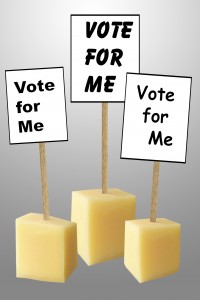 Just like everything else in politics, everyone has an opinion about what material should be used for campaign signs.
Just like everything else in politics, everyone has an opinion about what material should be used for campaign signs.
There are basically three types of political yard signs: plastic bag, corrugated plastic, and double-sided cardboard.
- Bag signs are easy to work with, but they don’t make sense for smaller campaigns. Corrugated plastic signs ship well and are good for states with a lot of bad weather. They can also be stored and reused over multiple election cycles.
- Corrugated plastic sign prices have come down significantly over the years. They are durable and hold up in the elements.
- Double-sided paper signs are inexpensive and versatile. They are printed on one side, folded over and stapled to the wood stake. However, they don’t hold up very well in the elements. You can cut paper signs in half and put them in the windows of cars, businesses or apartments.
In the end, you should choose the materials that work best for your needs.
What should I look for when selecting a printer?
You’ll want a sign printer who is professional and friendly. If your first contact with them isn’t great, it’s only going to go downhill from there. The best place to order from is a company that has a history of working with political campaigns and has a good reputation.
How does the cost of signage vary based on the size and type of signs ordered?
The cost of signage can vary based on the size and type of signs ordered. Generally, larger election signs will be more expensive than smaller ones due to the increased material and printing costs. The type of sign material can also affect the overall cost. For instance, corrugated plastic signs tend to be more durable but may come at a higher price compared to double-sided cardboard signs. It’s recommended to request quotes from different sign printers or suppliers to compare prices and determine the best option for your campaign budget.
How can placing larger signs next to smaller competitor signs impact perception?
Placing larger signs next to smaller competitor signs can have an interesting impact on perception! It can act as a visual trick that can influence how people perceive the importance and prominence of a candidate. When a larger sign is placed alongside smaller signs, it tends to draw more attention and command a stronger presence in the viewer’s mind. It creates a sense of visual dominance, making the candidate with the larger sign appear more significant and influential.
Can I make my own signs to use?
Sure! There are plenty of campaigns that make their own yard signs and use them along with printed signs. Some candidates even design and create their own signage from scratch for grassroots marketing.
Related: DIY Homemade Political Yard Signs
When should campaign signs be purchased?
The closer you get to Election Day, the busier sign printers become. The best time to start the ordering process for election signs is a few months before you think you’ll need them. Normal production is about 5 days. Shipping is anywhere between 1 and 4 days, so give yourself a minimum of at least two weeks. Having that extra time makes it possible to get your questions answered, iron out any issues, and get your order fulfilled without problems.
Are there any restrictions on the design or placement of political signs imposed by local laws?
There are different rules and restrictions on campaign lawn signs depending on the country, state, or local government. Here are some specific examples from the United States:
- Size restrictions: How big can you go? Some cities or states place specific size restrictions on political signs. For example, in Houston, Texas, political signs are not allowed to exceed 8 square feet in size.
- Location restrictions: Where you place a sign can be regulated. In California, political signs cannot be placed in the right-of-way of a highway or within 660 feet of an election polling place.
- Content restrictions: There may be freedom of speech, but it might not apply to signage. For instance, political signs in the state of Maine can’t say anything that isn’t true or that is hurtful or defamatory.
- Time restrictions: Many states or cities place limits on when you can place and when you must remove signs. In Illinois, political signs can’t be placed until 90 days before an election, and they have to be taken down within 10 days after the election.
- Aesthetic restrictions: You may even run into limits as to how your sign can look. For instance, Newport Beach, California, allows only up to three signs on a residential property.
- Personal property: You cannot place your signs on a property owner’s yard. Personally, I’ve had that happen to me. It was for a candidate that I did not support. It ended up in the trash.
And don’t forget – after the election, you are going to need to dispose of the signs.
Distribution and Management
How can I effectively distribute my campaign signs for maximum visibility?
When it comes to distributing your campaign signs, strategic placement is key. Focus on high-traffic areas, busy intersections, and locations where they are highly visible to passersby. It’s also important to consider the demographics of different neighborhoods and tailor your placement to areas where you have the strongest support base. Remember, quantity is great, but it’s the quality of placement that counts. Make sure to follow any local regulations on placement to avoid any legal problems.
What are the best practices for managing volunteers who help with sign placement?
Managing volunteers for sign placement requires organization and clear communication. First, provide a brief training session to make sure everyone understands the legal guidelines for sign placement. Assign specific areas or routes to each volunteer or team to avoid overlap. Use a map or a digital tool to track where your signs are placed. This will help make sure your coverage is even and effective. Check in with your volunteers regularly. You’ll need a motivated and well-organized volunteer team to get those signs out, so don’t forget to show appreciation for their efforts!
Preparing for Candidate Debates
Some campaigns will have debates or forums as an opportunity for candidates to present themselves and their platforms to the public. The rules and formats of these debates vary and are agreed upon by the candidates and moderators ahead of time.
Here are tips to improve your public debate skills:
Before the debate, try to anticipate the arguments that might be made by other candidate(s). Research and facts are critical. You need to be prepared on both sides of the debate topics. Come up with answers against your own points in addition to your opposition’s. Have others help you in preparing a ‘mock debate’. Let them poke holes in your arguments and practice your facts until you know them cold. Learn your weaknesses and those of your opponent.
Prepare your opening remarks or introduction as you could for any other speech. You may want to include an opening quote or fact that is related to a major debate issue. Start off your position by stating these proven points. This helps make your positions easier to defend going forward.
Cross examination is to clarify points or to add explanation to a point or fact that you didn’t understand. Don’t argue with the other candidate(s), either. During cross-examination, don’t make statements when asking questions. You should already know the questions you want to ask beforehand. When you are finished, use what you can from their answers and incorporate their statements into your rebuttals.
Respond to every point your opponent mentions. By not responding to a point during a debate, it is assumed that you agree with them. Be prepared to counter every argument. If you are attacked, confront the attack (or insult, if it’s personal), and reply by transitioning what is said into one of your talking points.
During rebuttals, show the audience the contrasts between you and your opponent. This is done by restating and re-arguing your own points.
Keep your cool. Want to lose an argument fast? Just lose control on stage. Don’t let your opponent knock you off your message or drive you to an emotional outburst. Focus on keeping calm and staying on message.
Public debates can make or break a local campaign. Be sure to prominently announce the debate on your campaign site and keeping your email and social subscribers up to date. The more supporters a candidate can get to attend a debate, the better. A friendly crowd (and adequate preparation) should help make the event a success.
Additional Debate Resources:


Online Candidate provides affordable campaign website and marketing to solutions to large and small political campaigns.




